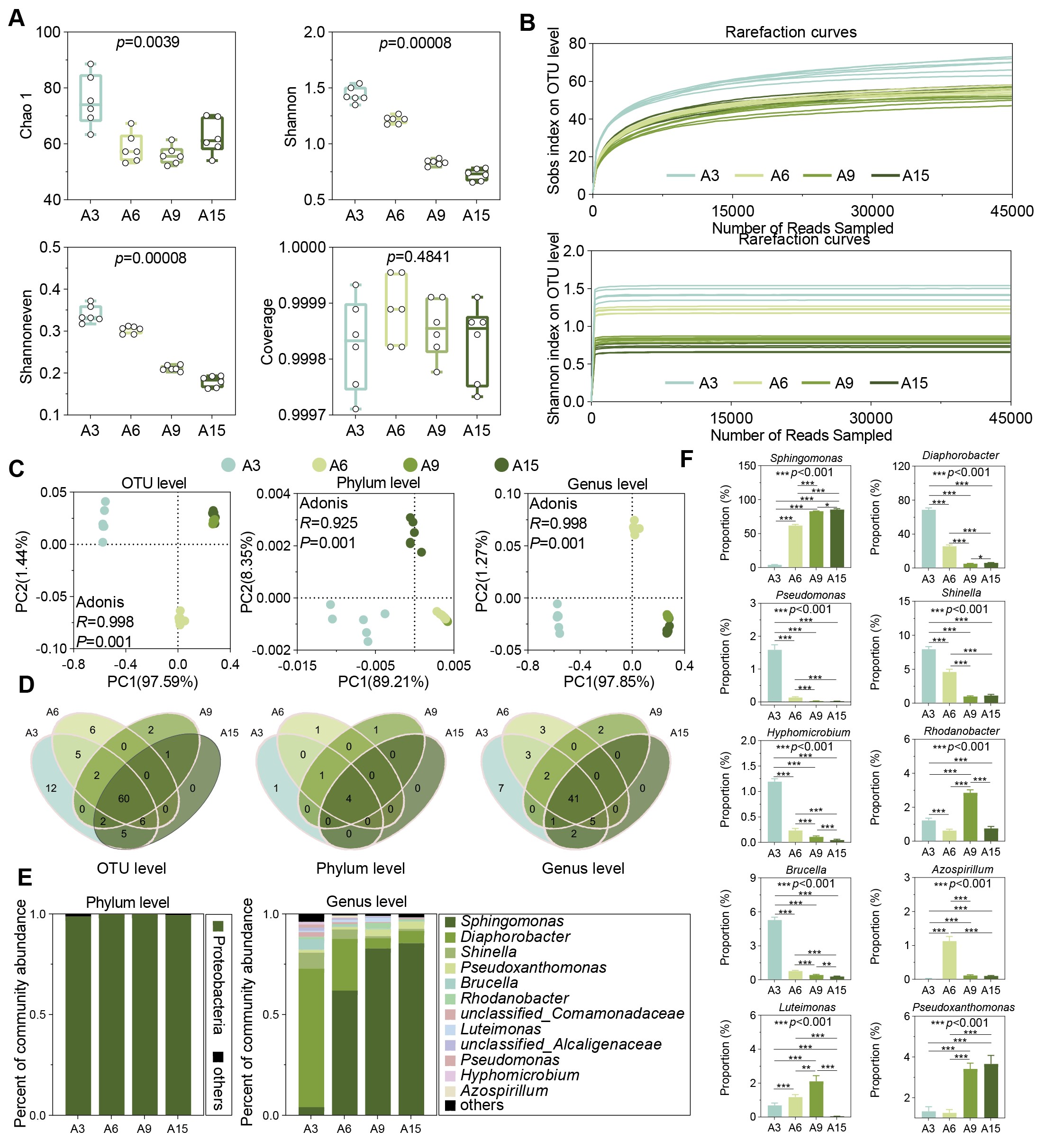
Researchers led by Dr. XU Mingkai from the Institute of Applied Ecology of the Chinese Academy of Sciences have identified a highly effective microbial consortium capable of fully degrading acetochlor, a widely used and persistent herbicide. This discovery offers a promising, environmentally friendly approach to mitigating soil pollution caused by herbicide residues on soil ecosystems, food quality, and overall environmental safety.
The study was recently published in Journal of Environmental Management.
Acetochlor, an amide herbicide favored for weed control, poses significant environmental risks due to its long-term persistence and toxicity to non-target organisms. Conventional remediation methods often fall short in addressing these challenges sustainably. In contrast, bioremediation—using microorganisms to break down pollutants—has gained traction as a viable solution, especially with advances in synthetic microbial consortia.
In this study, the researchers enriched a microbial consortium, named AT1, from acetochlor-contaminated farmland. Under optimised conditions, AT1 nearly completely degrade acetochlor concentrations as high as 1,000 mg/L within twelve days, outperforming previously reported strains or systems.
High-throughput 16S rRNA gene sequencing revealed that microbial diversity within AT1 decreased over the course of acetochlor degradation, with microbial community structure and function shifting significantly. Through microbiomic-metabolomic analysis, the researchers uncovered a novel degradation pathway for acetochlor driven by synergistic metabolic interactions among different microbes.
In this pathway, Pseudomonas initiated N-dealkylation, Diaphorobacter catalysed amide bond hydrolysis, and Sphingomonas contributed to both carboxylation and hydroxylation of the aromatic ring.
Together, these microbes broke down acetochlor into smaller intermediates such as 2,6-dimethylaniline, resorcinol, and phenol, which were further mineralized and funneled into the tricarboxylic acid (TCA) cycle—a central energy-yielding pathway in microbial metabolism.
Beyond mechanistic insights, the researchers also validated the consortium's potential in a microcosm experiment, confirming that AT1 effectively reduced acetochlor residues in contaminated soil.
These findings not only enrich the scientific understanding of amide herbicide degradation but also provide practical tools for developing green bioremediation technologies to address non-point source pollution in agricultural environments.
By harnessing the complementary metabolic capabilities of multiple microbial species, this study marks a significant step forward in sustainable pollution control. It highlights the growing importance of microbial engineering in managing chemical residues and safeguarding environmental and food safety.

Changes in microbial diversity and community structure during degradation of acetochlor by consortium AT1 (Image by DAI Yumeng)

86-10-68597521 (day)
86-10-68597289 (night)

52 Sanlihe Rd., Xicheng District,
Beijing, China (100864)

